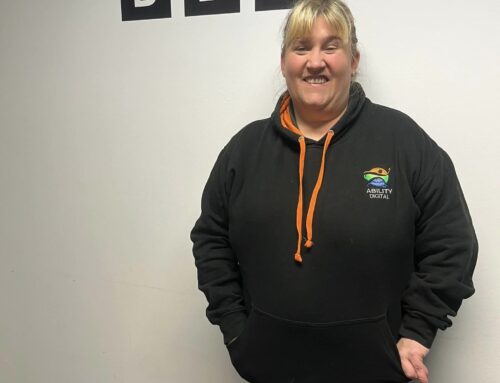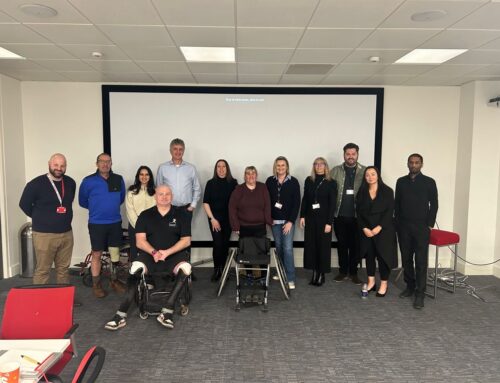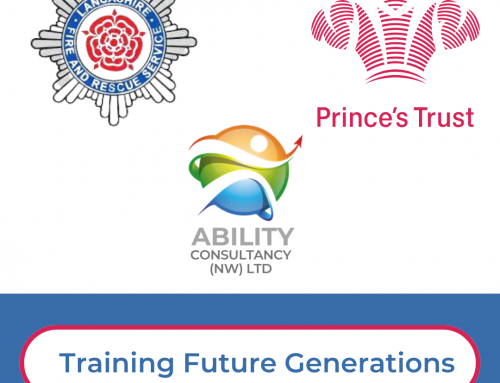Myths About Hiring Someone With A Disability
2020 is a year no-one will ever forget not only for COVID-19 but how the world and organisations have changed. With unemployment on the rise, what job opportunities will there be? We will see an increase in applications, but still, disabled people will miss out on many jobs. So, how will organisations be compliant, not discriminating against a person with a disability? Let’s take a look at some myths about employing someone with a disability.
The Equality Act of 2010 is designed to ensure equal opportunities for people that may have protected characteristics. One of these nine protected characteristics is disability. There are over 13.9million disabled people in the UK, of which 7.9million (58%) are of working age.
Let’s have a look at some of the top myths
It costs more to employ a disabled person
The employer thinks that if they employ a disabled person, they might have to get special, more expensive equipment. This is not always the case. Most of the time it is very simple adaptions needed, allowing the disabled person to fulfil their role. Simple changes, for example where the disabled person sits in the office, may be all that is needed. Every disabled person is different, so not one fix will be suitable for everyone. In the UK, there is a government initiative called the Access To Work Scheme. This allows disabled employees to apply for funding to help them carry out their roles. The size of the organisation will determine how much the employer has to contribute. For example, for a small business with less than 49 employees there will be nil cost to the employer. For larger organisations of 50 and 249 employees, there is a cost of £500. An organisation with more than 250 employees will contribute up to £1,000. Balances over £10,000 will be covered by Access to Work.
Disabled people are not as qualified as able-bodied employees
Many disabled people achieve: they have qualifications and may be ov erqualified for their current job. Employers have the responsibility not to assume they cannot do a role just because they have an extra need. The employer should not assume they won’t have the education or training to carry out the role. One difference between a disabled person and a non-disabled person is they may do the job differently while achieving.
erqualified for their current job. Employers have the responsibility not to assume they cannot do a role just because they have an extra need. The employer should not assume they won’t have the education or training to carry out the role. One difference between a disabled person and a non-disabled person is they may do the job differently while achieving.
A disabled person has the resilience and knowledge of how to adapt a task, allowing them to complete it. You never know, a disabled person may be more effective and achieve better results!
Disabled people are more likely to have more days off sick
Research shows that disabled people have a lower rate of sick leave than other employees. They have a higher level of attendance and a better work ethic. In 2018, research from the office of National Statistics shows the main reason for sickness is a minor everyday illness, not ones resulting from disability. It also found females are more likely to call in sick than males.
Unable to meet performance targets
Any employee is at risk of not meeting their performance target, whether they have a disability or not. A good recruitment process would reduce the incidence of underachieving on performance targets. Everyone, no matter their disability or ability, should have the correct qualifications to carry out the job. If changes are needed to meet their targets, these should be discussed as soon as possible.
Anyone falling behind their targets should meet with their manager and together come up with a plan of how to address these issues. They should look to develop a strategy or plan for the employee to meet their targets as requested. This plan will also identify what extra support they may need. Addressing these issues should have nothing to do with their disability – it is about the business being professional and ensuring they meet the needs of the business.
Increased time for training
In some cases, but not all, the time to train a disabled person may be longer than it would be for an able-bodied employee. This should not matter if the person doing the role can perform the job fully.
The disabled employee may be more qualified than the non-disabled person but needs an adjustment in terms of time to learn a new process. This is known as a reasonable adjustment, part of the Equality Act 2010.
Disabled people are more likely to have an accident at work
Safety comes first in all aspects of employment. The employer has a legal responsibility to make sure that all staff are safe in the working environment. There is no evidence that a disabled person will be more likely to have an accident in the workplace than other employees. A disabled person is typically more resilient and knows their weakness. They will try to avoid exposing themselves to things that could cause them to have an accident or an injury. A good employer will ask the disabled person what they feel they are capable of doing. This will aid the employer in identifying reasonable adjustments and any concerns about the role. This discussion should involve the human resources team. Working together they should put a health and safety action plan in place for the employee. This will allow the employer and HR to take a fresh look at the working environment, identifying any potential issues. The document should be under constant review and will help current, and future employees. Finally, it will help the business to be compliant.
A disabled employee might negatively impact the existing workforce
Many employees may struggle to develop friendships with colleagues. This is no different for a disabled person, but the existing workforce might find it more challenging than they normally would. A good employer will offer training and be open-minded to help people work together. Getting to know the workforce will provide a collaborative workforce. Disabled people should not be embarrassed about their disability. They should own it and where possible engage the rest of the workforce by being open and honest. Sharing stories (good and bad) breaks the taboo and awkwardness others may experience. This will help disabled employees feel part of the workforce as well as aid the understanding of others in the business. It may be a subject that is hard to approach, but it is a very important one. It will help society learn, understand, and embrace disability in the future.




